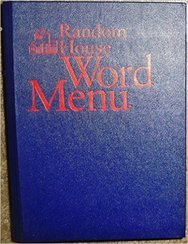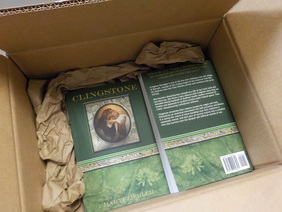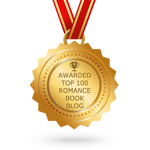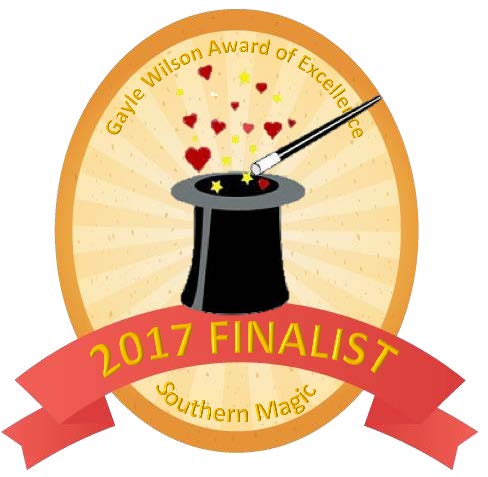 What makes a 9.0 book? This is an A- in comparison to an A+, and so we’re still dealing with an exemplary book here. It might not be perfect, but it very nearly is. It’s still a keeper. It has a place of prestige among its 10.0 counterparts, and it’s the sort of book that you regularly read every few years. You might not obsess over the characters that live inside its pages, but you gladly revisit them on those idle nights when you’re searching for something to read among your shelves of books, and you happily exclaim, “Oh, I loved that book! I haven’t read it in ages!” It’s an amazing book that transports you. It makes you laugh and cry and cheer your protagonists onward. The plot is nearly flawless. The characters are almost real. The writing is luminous, and you sigh wistfully after reading the last page. And so what makes up all of those tiny decimal points that separate a solid 9.0 from being a 10.0? It’s subjective, of course, and differs from reader to reader. A book of this high quality isn’t lacking in anything too substantial. Maybe the author uses a turn of phrase too often? Perhaps the entire book is phenomenal save for a slow part in the middle? Or maybe 99 % of the book is a masterpiece, but the last chapter ends on a bit of a dud? Maybe it’s just this feeling of incompletion, like maybe an epilogue should’ve been added, or there was a note of dissatisfaction at the end? Maybe the ending itself felt rushed or was consumed by clichés? Again, a 9.0 is a near-perfect book, and each little decimal point separating it from a 10.0 is subjective, but I think, for the sake of the upcoming RITA judging, a demotion in decimal points needs to reflect a small disappointment in the story, or a loose end that the writer didn’t tie up, or a minor continuity issue. Or perhaps a deviation in the plot that didn’t really make sense. And so which books do I own that merit a solid 9.0 rating, in my opinion? Kristan Higgins’ Fools Rush In and Just One of the Guys. I loved, loved, loved these early books of Kristan Higgins’. I adored the first-person narration she used. I giggled at her frequent use of exclamations, and I adored the awkward date stories. Her heroes and heroines were three-dimensional and sympathetic. My only complaint? I didn’t feel like I got enough of their story. I love me some good ol’ angst in a romance, but if it wraps up too quickly, I feel cheated. Kristan’s heroes and heroines always manage to get together, and that’s fantastic, but not until the end of the books. I always wanted more of their time together. And so if the only complaint about a book is that the reader wants more, well, I guess that’s nothing to feel too bad about! Stay tuned for next week’s exploration into 8.0, or “good” territory. That’s a solid B rating, folks!
0 Comments
 Lately, I’ve been thinking about the preliminary judging that I’ll be participating in for the RITA contest that beings in mid-January. Usually, when we rate a book—be it on Amazon or Goodreads—the scoring is on a scale of 1 to 5. It’s a rating system that I’m familiar with and can easily define. However, the scoring used to judge the RITA contest is much more comprehensive and consists of a scale ranging from 1 to 10. The following is taken directly from the Romance Writers of America website: Scoring Overview Each preliminary-round entry will be scored individually on a scale of 1.0 to 10.0, with 1.0 being the lowest (poor) and 10.0 being the highest (excellent). Decimals (from .1 to .9) are STRONGLY encouraged to help avoid the possibility of a tie. Judges are encouraged to think of the points system as equivalent to a classroom grading scale: 9.0-10.0: Excellent 8.0-8.9: Good 7.0-7.9: Average 6.0-6.9: Below average 5.0-5.9: Marginal 4.0-4.9: Poor Below 4.0: Very poor Now, with that being said, I’ve been thinking about how to define each level, particularly since decimal points are encouraged. I don’t want to randomly assign a decimal point or even a whole number without having a clear formula in place beforehand. After all, the ratings judges assign can potentially impact someone’s career. There should be nothing arbitrary about it, and so I’m devoting this blog post to what I believe fits the criteria of a solid 10.0 rating, the highest rating that can be assigned to a book in the RITA contest. I don’t know about anyone else, but I’ve read only a handful of 10.0 books in my life. These are the books that keep you up all night reading, or even up all weekend reading. You cry and laugh dozens of times while reading a 10.0 book. Sometimes you’ll stop and reread a phrase because the writing is so extraordinary. You remember where you were when you read a 10.0 book. Afterwards, you wax poetic about it to everyone you know. This is a perfect book; perfect in its plot, characters, pacing, and structure. The characters feel like living people, and they pop into your mind on occasion, like when you’re taking a walk and your mind is bright and clear and reflective. You wonder how they’re faring in their imaginary world. 10.0 books are the books that you keep forever. Even if you have an ebook copy, you need the physical copy as well, or something just doesn’t feel right. You keep them prominently on a shelf, the covers cracked and smudged from so many readings. These are the books you’ll continue reading until your eyesight goes, and then you’ll faithfully listen to the audio version until your hearing goes. And when all else fails, you’ll relive their adventures in your mind, until that too goes. And so what are two of my favorite 10.0 books? Firstly, Diana Gabaldon’s Outlander, which I originally read in 2002 and have since reread too many times to remember. I picked it up at Barnes and Noble because it looked interesting. I proceeded to spend all weekend curled up on my couch devouring this 850-page clunker. I barely stopped to eat and sleep. Everything about Outlander dazzled me. Jamie and Claire are like real people in my mind after reading about their lives for over fourteen years, and that, to me, is the makings of a perfect book. Outlander, the first in Gabaldon’s long series, is one of my most treasured 10.0 books. Another example is A Dog’s Purpose, by W. Bruce Cameron. I read this book in the summer of 2011 while on vacation down in Florida. I sobbed ugly sobs while reading this book. I laughed great belly laughs while reading this book. The story of Bailey the dog and his many incarnations as he struggles to find his purpose confirms what all of us dog-lovers already know: the bonds we have with our animals stay with us long after they’re gone. I still simultaneously smile and get a lump in my throat whenever I look at the cover of A Dog’s Purpose. That’s it for this week! Next week’s post will break down scores 9.0 to 9.9 in what is quickly proving to be a much more detailed overview of book scoring than I would have thought possible!  This monstrosity was published in 1992, the year I graduated from high school, and clocks in at a whopping 977 pages, measures 10 x 7 inches, and is mostly comprised of a font that looks likes Times New Roman at an eye-squinting 9 or 10 points. Nary a photograph or drawing can be found in this reference book that cares more about jamming in as much information as possible than it does about aesthetics. This clunker can be used to prop open doors or fend off home invaders, your choice. Or, as per its original intention, be used to refer to every obscure fact or hierarchy or vocabulary usage known to man, and then some. I adore this book. Want to ponder on the various styles of mustaches throughout the ages? Hankering to know how many breeds of chickens there are? Can’t remember the difference between igneous, metamorphic, or sedimentary rocks? Then refer to Mr. Glazier’s book and you’ll have an unlimited guide to the internal combustion engine, meteorology, and various cuts of meat. Can’t remember the name for a hinged window above a door? The Word Menu knows. Military ranks, property law, and support garments abound in Mr. Glazier’s book. The section on language usage fairly boggles the mind. For example, intent on reviewing some terms of endearment and respect? There’s a section that breaks down such terms into the following categories: Pet Names; Friendly and Familiar Address; Titles and Honorifics; Affectionate Reference, and Respectful or Admiring Reference. And that, my sweet poppets, is a wonderful example of the Word Menu’s very thorough, very prolific lists of well, lists. The only downside is that some of the information is dated. The sections on populations and space exploration are frozen in time, and the section on computers exist in a parallel universe where social media didn’t exist and the internet was still in its infancy. That being said, the bulk of information found between the covers of the Word Menu is a treasure trove for the historical writer. After all, the section on popular music that woefully ends with the 1980s never factors in to our books on 19th century dukes and the wallflowers who love them! The remaining drawback about this book is that it can only be used as that first stepping stone on the way to acquiring information. Terms only receive an one-line definition before moving on to the next snippet of knowledge. For instance, if your heart is set on discovering how many types of worms are listed in the section dedicated to such critters, you’ll be happy to know it’s 62, but you’ll have to look elsewhere if you’re dying to know what a tubifex worm looks like, or whether or not it lives in fresh or salt water. And hey, who isn't dying to know what a tubifex worm looks like? I know I am. The Word Menu certainly has its limitations, but overall it’s an irreplaceable tome in my library of reference books. Want to go over this marvelous book with a fine-tooth comb for yourself? It’s still available for sale on Amazon by clicking here.  Wahoo, it’s done! I entered Clingstone in the 2017 Rita contest when it opened to entries at 11 am on Tuesday, November 1st. I entered it into the Historical: Long category, and I also marked it for the category Best First Book. I know the competition will be stiff, but I think this is going to be a lot of fun, regardless of whether I place or not. I couldn’t believe how quickly RWA received the maximum 2000 entries; the contest was closed in less than 48 hours, so I’m glad my procrastinating tendencies didn’t make me miss out on this exciting opportunity. I sent off my five paperback copies of Clingstone on Wednesday, so I’ve done all I can do for now. Oh, and I didn’t realize this until right before I entered the contest, but all entrants are required to be a judge in the preliminary round. I’m really excited about that! Obviously, I don’t judge books in my own category, but I’m to read a few books in some of the other romance subcategories—for example, paranormal, contemporary, or suspense—and rate them on a scale of one to ten. Due to contest confidentiality rules, I can’t say which books I receive, but I’m supposed to get a packet of four to nine books sometime in January. Free books, how great is that? I can’t wait to share some of the behind-the-scenes tidbits with you on my blog…without hedging on confidentiality issues, of course! The winners of the October e-book giveaway are Jenny Grieder and Angela Parnell! Congratulations, Jenny and Angela! This month’s contest is for a free e-book copy of Clingstone (provided as an Amazon gift). Two winners will be selected, each to receive 1 e-book copy. The contest runs throughout the entire month of November and is open to all participants. Simply submit the Giveaway form on this website. The winners will be announced in my blog post on December 1. Good luck!
Names and emails are for contest purposes only. All contact information will be deleted after the contest ends. The winners’ contact information will be deleted once Amazon confirms the e-book was claimed. |
Marti Ziegler
|



 RSS Feed
RSS Feed


